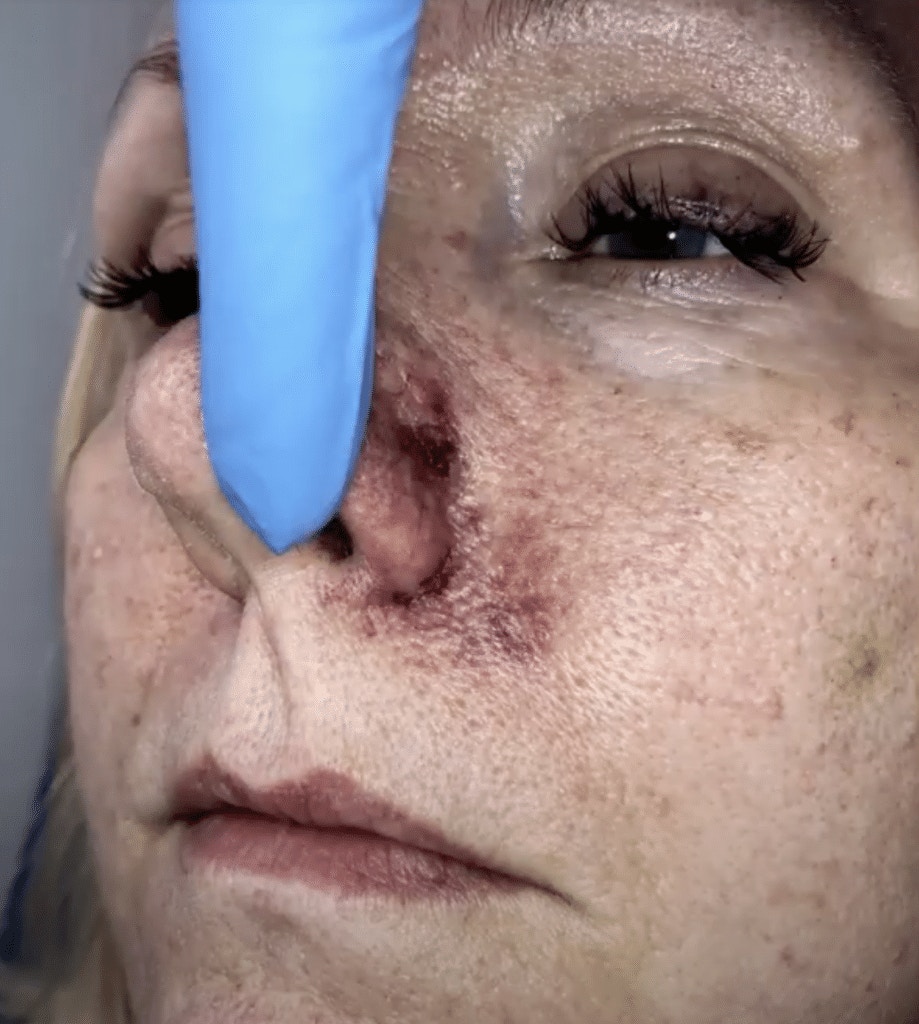Bruising Or Vascular Occlusion? How To Tell

A bruise forming as you’re treating a patient is many an aesthetics practitioner’s nightmare. The first question you need to ask in this instance is, what’s causing it – regular bruising or vascular occlusion (VO)?
At Harley Academy we are passionate about inspiring safe practise and aesthetic excellence. As such, this is an important question we wanted to cover to help inform your treatment approach.
We spoke to cosmetic doctor, clinical trainer and aesthetics business owner, Dr Jaymi Lad to find out how you can tell the difference...
HOW TO TELL BRUISING FROM A VASCULAR OCCLUSION

How long after treating a filler patient does it take for bruising to appear?
“In most instances, you can start to see the formation of a bruise very soon after your treatment – it sometimes just looks like erythema initially which darkens with time. Bruises from injectable treatments are more commonly pin prick bruises at the site of the needle entering the skin. This is especially true for the lip area, which is highly vascular,” notes Dr Jaymi.
What are the signs of vascular occlusion to look for here?
“A key difference is that bruising will have a normal capillary refill time, whereas a VO will have a delayed capillary refill,” Dr Jaymi advises as the best way to determine bruising from vascular occlusion.
“Capillary refill time is a simple bedside measure to check peripheral tissue perfusion. You apply enough pressure to blanch the tissue and hold for 5 seconds. On releasing, the tissue should reperfuse within 2 seconds,” she instructs.
“Also, a bruise will be present where there’s been trauma from the treatment. A vascular occlusion may cover a territory of a supplying vessel and be outside of your treatment area.”
Say you’ve checked the capillary refill time but still aren’t sure if it’s a VO, what should you do?
“Monitor the patient closely over the next 1-2 hours with repeated clinical examinations. Documenting capillary refill time and medical photography/videography will also be useful,” counsels Dr Jaymi.
“A bruise may change in colour/darken with time, but a VO will progressively get worse with time.”
She adds, “If you are unsure, I would recommend speaking to a more experienced colleague for advice or contacting a support network like ACE or CMAC. If it is a VO dissolving with hyaluronidase as quickly as possible will lead to better outcomes. Whilst you can certainly reach out to online support resources such as the Comma community too, in time sensitive instances, be sure to seek advice where you can get an immediate answer.”
How did you learn to tell the difference between bruising and vascular occlusion?
“Through education and my experience of reviewing complications – not just my own, but learning from the experiences of my colleagues in the industry,” explains the Level 7 Diploma graduate.

LEARNING ABOUT COMPLICATIONS PREVENTION AND MANAGEMENT
If you’d like to learn more about issues such as bruising and vascular occlusion, we have a dedicated online course for you.
Preventing and Managing Dermal Filler Complications is a self-paced eLearning course. Open to licensed doctors, dentists, nurses and midwives, it allows you to become a safer, more prepared and, therefore, more confident aesthetics practitioner.
This short aesthetic medicine complications course can be purchased as a standalone learning tool. It also forms part of our flagship Ofqual licensed qualification, the Level 7 Diploma in Botox and Dermal Fillers as well as our Fast Track Level 7 option.
The Level 7 Diploma offers a widely-respected, Master’s level education in injectables. In addition to our innovative eLearning, it also includes hands-on mentored learning and a library of online material that you can refer back to throughout your aesthetics career.
Find out more about our aesthetic medicine training course options by booking a call with our dedicated Student Recruitment team. Whether you’re a beginner, are looking to formalise your aesthetics training by studying for a formal qualification, or simply want to become more confident in dealing with complications, they’ll be happy to answer all your questions and guide you towards your best options for becoming #HarleyTrained.
Further reading
If you’d like to learn more about minimising the risk of bruising when treating patients, we highly recommend checking out the following articles:
Cheek Filler: How to Prevent Bruising
Lip Filler: How to Prevent Bruising
How to Prevent Bruising from Botox
Alternatively, if you’d like to explore complications advice further, check out these articles:
Vascular Occlusion Advice for Aesthetics Practitioners
How to Treat a Travelling Vascular Occlusion
Preventing Filler Embolus and Vascular Occlusion
All information correct at the time of publication
Download our full prospectus
Browse all our injectables, dermal fillers and cosmetic dermatology courses in one document
By submitting this form, you agree to receive marketing about our products, events, promotions and exclusive content. Consent is not a condition of purchase, and no purchase is necessary. Message frequency varies. View our Privacy Policy and Terms & Conditions
Attend our FREE open evening
If you're not sure which course is right for you, let us help
Join us online or in-person at our free open evening to learn more
Our Partners












STAY INFORMED
Sign up to receive industry news, careers advice, special offers and information on Harley Academy courses and services

